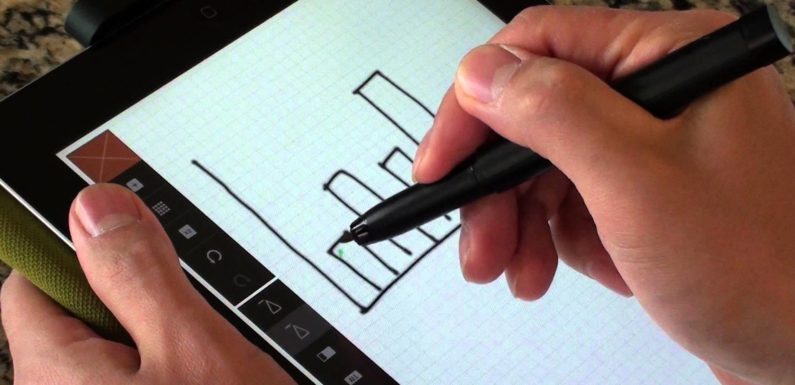
Digital pen refers to the use of electronic and smart pens in various industries, such as healthcare; banking and finance; IT & communication; and others. A digital pen helps its user to digitally capture a drawing or a handwritten note. Digital pens are marginally larger than regular ballpoint pens, in the sense that digital pens capture pen strokes, including texts and drawings, on an LCD screen or on a specially designed digital paper.
Some digital pens have in-built scanners, which help in capturing handwritten notes and drawings and transferring them to a computer. Digital pens use character recognition software and work by recording movements of the pen point. In some digital pens, handwriting recognition software helps users to convert their handwritten notes into typed text form. The typed and recorded information by digital pens can be transferred to a computer through a docking device connected through a Universal Serial Bus (USB) port. The digital pen technology captures electronically handwritten context and transforms into digitized forms.
The global digital pen market is mainly driven by factors such as rising disposable income, increasing use of digital pens to eliminate paper work, and growing demand for advanced features offered by digital pens. Disposable income of people in emerging economies has increased significantly over the years. This has encouraged people in these economies to spend additional money on digital technology solutions, such as digital pens. Digital pen is increasingly being used for various purposes, such as note-taking and creating instructional content. With rising income, people are investing more on digital technological tools to save manual effort in addition to time. According to the National Bureau of Statistics of China, the per capita disposable income in China increased by 8.3% in 2017, as compared to the previous year. Part of this increased disposable income is being spent on digital tools, such as digital pens, which, in turn, is expected to boost their demand in the country. Thus, growing disposable income is emerging economies is expected to drive the market for digital pens in the coming years.
In terms of value, the digital pen market in Europe is expected to grow at a CAGR of 20.3% during the 2018-2023. The penetration rate of tablets is increasing across different European countries, as tablets continue to replace traditional PCs. According to secondary sources, the tablet penetration rate among users is estimated to be more than 50% in the U.K., in 2017. Hence, rising usage of tablets is expected to increase the demand for digital pens for the digitization of texts and figures.
Western Europe has been identified as one of the most lucrative markets for digital pen owing its growing demand among tablet users and healthcare professionals. Moreover, growing education sector and increasing adoption of electronic learning tools in the region have fuelled the demand for digital devices, such as electronic pens, tablets, and laptops, in this region.
Some of the key players in the global digital pen market are HP Inc., Apple Inc., Anoto Group AB, Microsoft Corporation, Toshiba Corporation, Wacom Co. Ltd., STAEDTLER Mars GmbH & Co. KG, Canon Inc., Hanwang Technology Co. Ltd. NeoLAB Convergnece, Moleskine S.p.A. and Luidia Inc.

